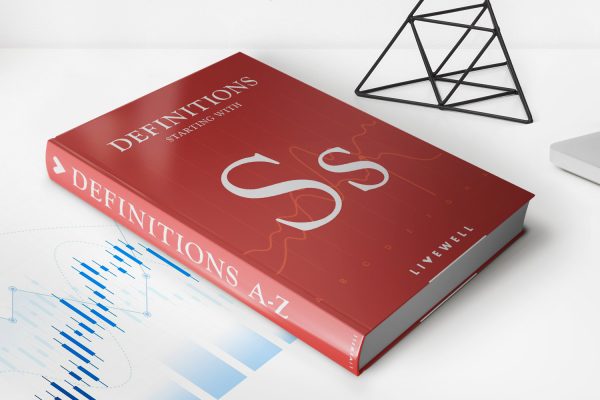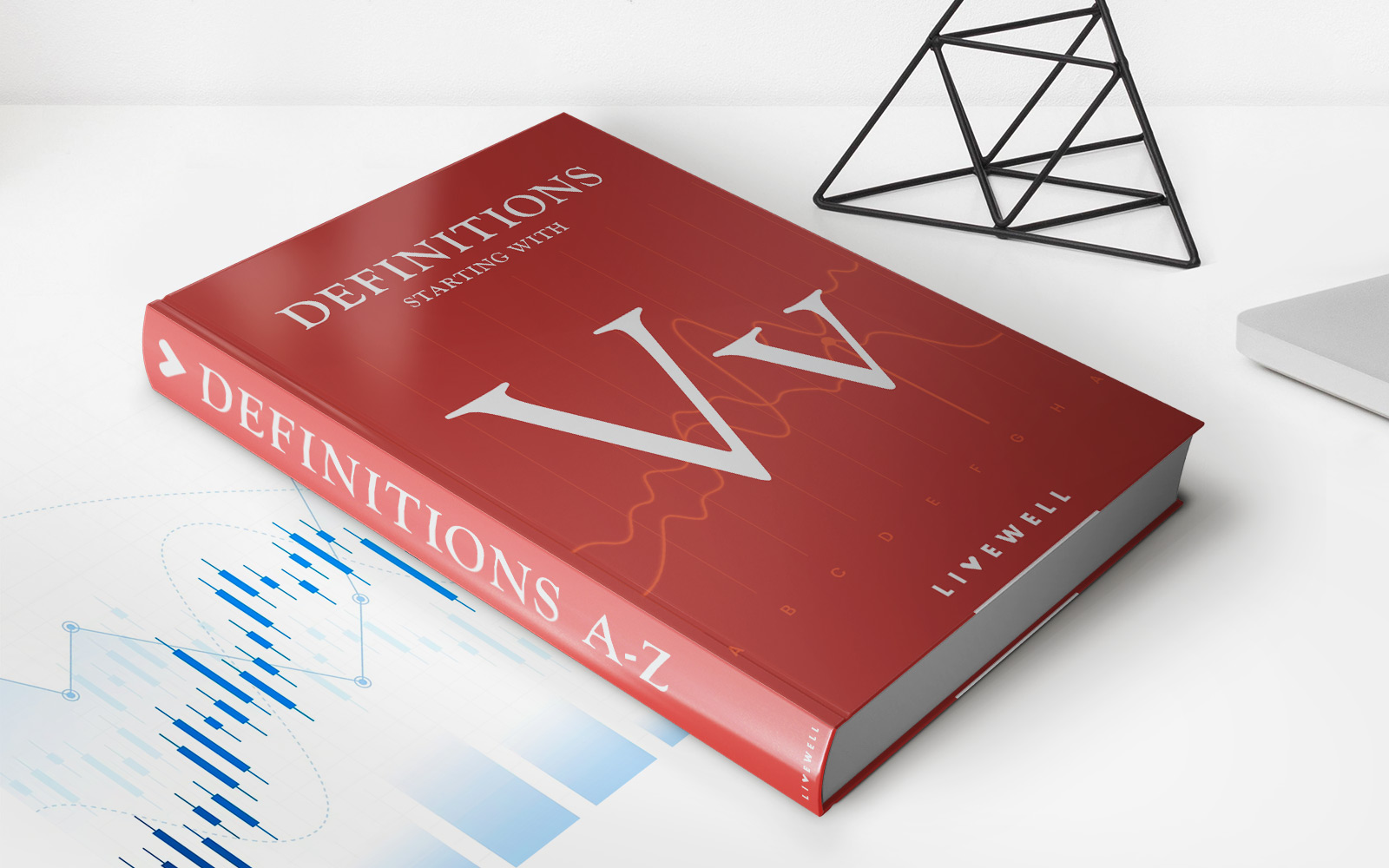

Finance
What Is EOI For Life Insurance?
Published: November 6, 2023
Learn what EOI for life insurance means and how it impacts your personal finances. Understand the importance of EOI in securing financial protection for you and your loved ones.
(Many of the links in this article redirect to a specific reviewed product. Your purchase of these products through affiliate links helps to generate commission for LiveWell, at no extra cost. Learn more)
Table of Contents
Introduction
When it comes to securing your financial future, life insurance plays a crucial role. It provides a safety net for your loved ones, ensuring that they are financially protected even after you’re gone. However, obtaining life insurance isn’t always a straightforward process. Insurers want to thoroughly assess the risks involved before issuing a policy.
This is where Evidence of Insurability (EOI) comes into the picture. EOI is a critical aspect of the life insurance application process that helps insurers evaluate an individual’s risk factors and determine the premium rates. In essence, it serves as a way for insurance companies to gather comprehensive information about an individual’s health and lifestyle.
In this article, we will delve into the concept of EOI for life insurance, explaining its definition, purpose, and how it works. We will also discuss the benefits, common terms and conditions, as well as the pros and cons associated with EOI in the context of life insurance. By the end, you’ll have a clear understanding of the significance of EOI and how it impacts your life insurance application.
Definition of EOI for Life Insurance
Evidence of Insurability (EOI) is a process that involves assessing an individual’s health, medical history, lifestyle choices, and other risk factors to determine their eligibility for life insurance coverage. It is an essential step in the life insurance application process, where insurers evaluate the level of risk associated with insuring an individual.
During the EOI process, the insurance company may require applicants to complete a detailed questionnaire, undergo medical examinations, provide medical records, or even perform additional tests as deemed necessary. The purpose of this thorough evaluation is to gather as much information as possible to accurately assess the applicant’s risk profile.
The information gathered through the EOI process helps insurance companies determine the premiums an applicant will pay for their life insurance policy. The higher the perceived risk, the higher the premium is likely to be, reflecting the increased likelihood of a claim being made in the future.
It’s important to note that EOI is not always required for every life insurance policy. In some cases, for smaller coverage amounts or group policies provided through employers, EOI may not be necessary. However, for larger coverage amounts or individual policies, EOI is typically a standard requirement.
The EOI process is designed to ensure that insurance companies can accurately evaluate an individual’s health and lifestyle risks before issuing a life insurance policy. By assessing these factors, insurers can determine the appropriate coverage and premium rates, balancing the need to provide financial security with the associated risks they are willing to undertake.
Overall, the purpose of EOI is to provide insurers with the necessary information to make an informed decision about an individual’s life insurance application. It ensures that the coverage and premiums are tailored to the individual’s specific risk profile and helps the insurance company manage their financial obligations responsibly.
Purpose of EOI in Life Insurance
The purpose of Evidence of Insurability (EOI) in the context of life insurance is to assess an individual’s health and lifestyle risks to determine their eligibility for coverage and to set appropriate premium rates. EOI plays a crucial role in helping insurance companies manage their financial risks and ensure the sustainability of the life insurance industry as a whole.
One of the primary purposes of EOI is to gather comprehensive information about an applicant’s health and medical history. This allows insurance companies to accurately assess the level of risk associated with insuring an individual. By evaluating an applicant’s medical records, conducting medical examinations, and considering lifestyle choices such as smoking or dangerous hobbies, insurers can better understand the potential risks involved in providing coverage.
Another purpose of EOI is to enable insurers to make informed decisions regarding coverage and premium rates. Insurance companies calculate premiums based on the risk an individual poses. EOI allows them to determine the appropriate premium amount that reflects the level of risk they are taking on. Individuals who are deemed to be high-risk due to pre-existing medical conditions or lifestyle choices may face higher premiums, while those with excellent health and low-risk factors may enjoy more affordable rates.
EOI also helps insurers maintain a balanced risk pool. By assessing the risk factors of applicants, insurance companies can allocate resources and premiums appropriately. This ensures that premiums are fair and accurately reflect the risk each individual brings to the overall pool.
Furthermore, EOI serves as a protective measure for both the insurer and the policyholder. For insurers, the thorough evaluation process helps minimize the risk of insuring individuals who may have undisclosed pre-existing conditions or otherwise misrepresent their health. This protects the financial stability of the insurance company by preventing fraudulent claims and potential losses.
For policyholders, EOI ensures that they are receiving appropriate coverage tailored to their specific risk profile. By providing accurate information during the EOI process, individuals can secure the coverage they need at fair premium rates. This ensures that in the event of a tragedy, their beneficiaries will receive the financial support they require.
In summary, the purpose of EOI in life insurance is to assess an individual’s health and lifestyle risks, set appropriate premium rates, maintain a balanced risk pool, and protect the interests of both the insurer and the policyholder. It ensures that the life insurance industry operates effectively and responsibly, providing financial security to individuals and their loved ones.
How EOI Works in Life Insurance
The process of Evidence of Insurability (EOI) in life insurance involves collecting detailed information about an individual’s health, medical history, and lifestyle factors to assess their risk profile. This enables insurance companies to make informed decisions regarding coverage and premium rates.
Here’s a step-by-step breakdown of how EOI works in the context of life insurance:
- Application: The EOI process begins with the completion of the life insurance application. This includes providing personal details, medical history, current health status, and lifestyle information.
- Questionnaire: In addition to the standard application, an insurer may require the applicant to complete a detailed health questionnaire. This questionnaire collects specific information about the applicant’s medical conditions, medications, surgeries, and lifestyle choices such as smoking, alcohol consumption, and participation in hazardous activities.
- Medical Examinations: Depending on the coverage amount and the applicant’s age, insurers may request a medical examination. This typically involves a visit to a healthcare professional who will conduct a physical examination, including measurements of height, weight, blood pressure, and other relevant tests such as blood and urine samples.
- Medical Records: Insurance companies may also request access to an applicant’s medical records to gain a more comprehensive understanding of their health history. This includes any previous diagnoses, treatments, surgeries, or ongoing medical conditions.
- Underwriting Process: Once the insurer has collected all the necessary information, it goes through a thorough underwriting process. This involves evaluating the applicant’s risk factors based on the collected data, medical records, and questionnaire responses. The underwriter will assess factors such as pre-existing medical conditions, family medical history, lifestyle choices, age, gender, and overall health status.
- Decision and Offer: Based on the underwriter’s assessment, the insurance company will make a decision regarding the applicant’s coverage and premium rates. The offer will outline the terms of the policy, including the coverage amount, premium payments, exclusions, and any additional requirements or conditions.
It’s important to note that the EOI process may vary depending on the insurance company and the specific policy being applied for. In some cases, for smaller coverage amounts or group policies, EOI requirements may be less extensive.
Overall, the EOI process in life insurance involves a comprehensive analysis of an applicant’s health, medical history, and lifestyle factors. This enables insurance companies to make informed decisions about providing coverage and setting appropriate premium rates based on the level of risk associated with insuring the individual.
Benefits of EOI in Life Insurance
Evidence of Insurability (EOI) in life insurance offers several benefits to both insurance companies and policyholders. It is an essential step in the application process that ensures fair and accurate coverage while managing the financial risks for insurers.
Here are some key benefits of EOI in life insurance:
- Accurate Risk Assessment: EOI allows insurance companies to assess an applicant’s health, medical history, and lifestyle choices to determine their risk profile. This comprehensive evaluation ensures that the coverage and premium rates are appropriate and accurately reflect the level of risk the insurer is assuming.
- Fair Premium Rates: Through the EOI process, insurers can set premium rates that are aligned with an individual’s risk factors. Higher-risk individuals, such as those with pre-existing medical conditions or engaging in risky activities, may face higher premiums. On the other hand, individuals with excellent health and low-risk factors may enjoy more affordable premium rates.
- Financial Protection: EOI provides individuals with the opportunity to secure life insurance coverage that meets their specific needs. By providing accurate information during the EOI process, individuals can ensure that their loved ones are financially protected in the event of their passing. Life insurance provides a vital safety net that can help cover expenses, pay off debts, or provide income replacement for beneficiaries.
- Customized Coverage: EOI allows insurance companies to tailor coverage based on an individual’s specific risk profile. It ensures that the policy terms and conditions are appropriate and reflect the applicant’s unique circumstances. This customization ensures that individuals receive coverage that aligns with their needs and provides the desired level of financial protection.
- Transparency and Accountability: The EOI process promotes transparency and accountability between insurers and policyholders. By collecting detailed information about an individual’s health and lifestyle, insurers can accurately assess the risk and set premium rates accordingly. This transparency helps build trust between the insurer and the insured, ensuring that both parties have a clear understanding of the coverage and its associated costs.
Overall, EOI in life insurance offers numerous benefits. It allows insurance companies to evaluate risks accurately, set fair premium rates, and provide customized coverage. For individuals, EOI ensures that they receive the appropriate protection for their specific needs and can financially safeguard their loved ones. It is a crucial step in the application process that helps foster transparency, accountability, and trust in the life insurance industry.
Common Terms and Conditions of EOI for Life Insurance
During the Evidence of Insurability (EOI) process in life insurance, there are several common terms and conditions that applicants should be aware of. These terms and conditions typically relate to the collection of information, medical examinations, and underwriting guidelines. Understanding these terms and conditions is essential to ensure a smooth application process and accurate assessment of eligibility.
Here are some common terms and conditions associated with EOI for life insurance:
- Health Questionnaires: Insurance companies often require applicants to complete detailed health questionnaires. These questionnaires ask for information about medical conditions, surgeries, medications, and lifestyle choices such as smoking or engagement in high-risk activities.
- Medical Examinations: Depending on the coverage amount and age of the applicant, a medical examination may be required. This examination typically involves measurements such as height, weight, blood pressure, as well as blood and urine tests. These exams help provide a comprehensive view of an individual’s health.
- Medical Records: Insurance companies may request access to an applicant’s medical records as part of the EOI process. This allows the underwriter to review past medical history, surgeries, treatments, and any ongoing medical conditions that could impact the risk assessment.
- Waiting Periods: In some cases, there may be waiting periods associated with certain medical conditions or past treatments. These waiting periods can affect the eligibility for coverage or the determination of premium rates. It’s important to understand any waiting periods that apply to the specific policy being applied for.
- Exclusions: Insurance policies may have specific exclusions related to certain pre-existing medical conditions or high-risk activities. These exclusions mean that the policy will not provide coverage or benefits related to those specific conditions or activities. It’s crucial to review the policy terms and conditions to understand any exclusions that may apply.
- Policy Limits: Each life insurance policy has coverage limits, which define the maximum amount that can be claimed under the policy. It’s important to understand these limits and ensure that they meet the desired level of financial protection for the policyholder and their beneficiaries.
- Premium Payments: The EOI process does not only determine coverage eligibility but also sets premium rates. Premiums can be paid on a monthly, quarterly, semi-annual, or annual basis. Understanding the premium payment schedule and method of payment is crucial to ensure the policy remains in force.
These terms and conditions may vary depending on the insurance company and the specific policy being applied for. It’s important to carefully review the policy documents and seek clarification from the insurer or insurance agent if any terms or conditions seem unclear.
By familiarizing themselves with these common terms and conditions, individuals can navigate the EOI process more effectively and make informed decisions regarding their life insurance coverage.
Pros and Cons of EOI in Life Insurance
Evidence of Insurability (EOI) is an integral part of the life insurance application process, but it comes with both pros and cons. Understanding these advantages and disadvantages can help individuals make informed decisions when applying for life insurance coverage.
Here are some of the pros and cons of EOI in life insurance:
- Pros:
- Accurate Risk Assessment: EOI allows insurance companies to assess an applicant’s health, medical history, and lifestyle choices, resulting in a more accurate assessment of their risk profile. This ensures that coverage and premium rates are fair and appropriate.
- Customized Coverage: Through the EOI process, insurance companies can tailor coverage based on an individual’s specific risk profile. This allows policyholders to receive coverage that meets their unique needs and provides the desired level of financial protection.
- Financial Security: EOI provides individuals with the opportunity to secure life insurance coverage, ensuring that their loved ones will be financially protected in the event of their passing. Life insurance can help cover expenses, pay off debts, and provide income replacement for beneficiaries.
- Transparency and Accountability: EOI promotes transparency and accountability between insurers and policyholders. By collecting detailed information, insurers can accurately assess risk and set premium rates accordingly. This transparency helps build trust and ensures that both parties have a clear understanding of the coverage and its associated costs.
- Cons:
- Lengthy Process: The EOI process can be time-consuming, requiring applicants to complete detailed questionnaires, undergo medical examinations, and provide access to medical records. This can delay the application and approval process, causing frustration for individuals seeking coverage.
- Potential for Higher Premiums: Depending on an individual’s risk factors, such as pre-existing medical conditions or engaging in high-risk activities, EOI can result in higher premium rates. Higher-risk individuals may face increased premiums to compensate for the elevated likelihood of a claim being made in the future.
- Potential for Coverage Denial: In some cases, insurance companies may deny coverage based on the results of the EOI process. Certain pre-existing medical conditions or high-risk activities may lead to coverage denials or exclusions for specific conditions. This can limit the options for obtaining life insurance coverage.
- Privacy Concerns: The EOI process requires individuals to provide detailed personal and medical information, raising privacy concerns for some applicants. It’s important to ensure that the insurance company has appropriate safeguards in place to protect the confidentiality of sensitive information.
Ultimately, the pros and cons of EOI in life insurance should be carefully considered and weighed against individual needs and circumstances. While EOI can provide accurate risk assessment and customized coverage, it may also involve a lengthy process, potential for higher premiums, coverage denials, and privacy concerns. By understanding these factors, individuals can make informed decisions regarding their life insurance coverage.
Conclusion
Evidence of Insurability (EOI) plays a vital role in the life insurance application process, providing insurance companies with the necessary information to assess an individual’s health, medical history, and lifestyle risks. EOI allows insurers to make informed decisions regarding eligibility, coverage amounts, and premium rates, ensuring fair and accurate protection for policyholders and managing financial risks for insurers.
While the EOI process may involve detailed questionnaires, medical examinations, and access to medical records, it serves the purpose of accurately assessing an individual’s risk profile. This assessment helps insurance companies tailor coverage based on an individual’s specific needs, providing them with appropriate financial protection.
EOI offers several benefits, including accurate risk assessment, customized coverage, financial security for loved ones, and transparency between insurers and policyholders. However, it also has its drawbacks, such as a potentially lengthy process, the potential for higher premiums, coverage denials, and privacy concerns.
When considering life insurance, it is important to carefully weigh the pros and cons of the EOI process. Take the time to understand the terms and conditions associated with EOI, review policy details, and consider your individual circumstances. By doing so, you can make informed decisions that align with your financial goals and provide the necessary protection for yourself and your loved ones.
In conclusion, EOI is a critical step in the life insurance application process that allows insurance companies to accurately assess risk, provide customized coverage, and ensure fair premium rates. It is part of a collaborative effort between insurance companies and policyholders to establish trust, transparency, and financial security. By understanding the purpose and implications of EOI, individuals can navigate the application process and secure the life insurance coverage that meets their needs.














